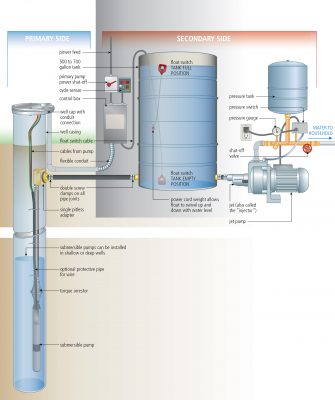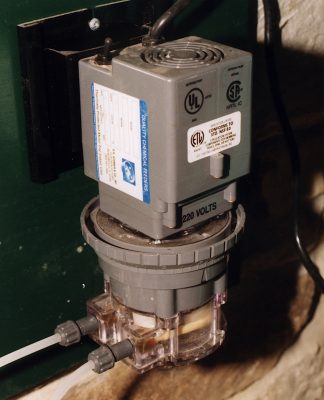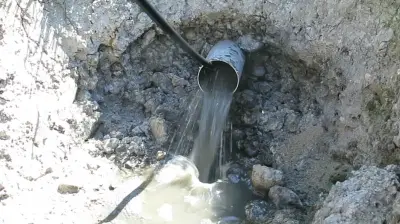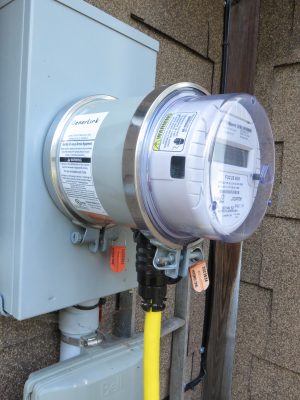UPDATED 23Apr2020 + video: Water wells, septic systems, electricity supplies and food storage – these are four of the biggest practical things you need to deal with directly if you’re a hands-on person leading a hands-on rural life. And success is often based on specific bits of know-how applied in the right way. In this article you’ll get some of the most valuable tips I’ve learned over the last 30+ years of providing the essentials of life for my own rural household. They’re part of the RURAL WATER, SEPTIC, ENERGY & FOOD SELF-RELIANCE COURSE combo pack I’ve put on special today for 20% off until 3May2020. Use discount code 20off at checkout.
Most of these tips I’ve learned the hard way, by first-hand experience, so perhaps I can save you some trouble. Whether you buy the course or not, I hope you find the tips here useful. I’d be surprised if some of these ideas weren’t brand new to you. Buying this course combo pack is one of the ways you can support the website and newsletter I create. I’m thankful for your help.
Hands-On Rural Life Skill#1: Maintaining a Household Water Supply
If you get your water from a well, lake or other private supply, here are a some technical tips that will help you succeed:
- IS YOUR WATER WELL WEAK? Chronic shortages of household water from a weak well are debilitating, but they can be completely eliminated with something called “the trickle system”. Sounds too good to be true, but it is true. Configure a submersible pump to switch ON only when water is available in the well. This pump delivers water to a storage tank, turning itself OFF automatically for a time when the well runs dry or when the storage tank is full. A second pump delivers water from this storage tank to your house whenever you turn a tap on. Even a very weak well delivering only half a gallon of water per minute can produce 600 to 700 gallons of water a day with this system. It’s life changing for anyone living with a weak well. It all comes down to simple electronic controls that shut the well pump off when the well runs dry, and a water level switch the prevents the holding tank from overflowing. Click to see the plans below.

Schematic drawing of “trickle system” setup for getting lots of water from a weak well. It really works. - CHOOSING A NEW WELL PUMP?: 1/2 HP submersible pump is the best for most households. Any bigger and the pump will cycle ON and OFF to much. Don’t use a 3/4 HP model. Jet pumps are popular, but they’re noisier, they use more electricity for a given volume of water pumped, and jet pumps can lose their prime if the water supply dries up. Submersibles are best.
- DOES YOUR WATER SMELL LIKE ROTTEN EGGS? Sulphur water that smells like rotten eggs can be made odourless by injecting hydrogen peroxide into the incoming water stream, then running the treated water through a whole-house carbon filter or a water softener. The hydrogen peroxide system works like magic, even with very rotten smelling water.

Injection pump for adding hydrogen peroxide to a household water supply for disinfection and odour control. A drum of hydrogen peroxide costs a couple of hundred dollars and lasts more than a year.
Hands-On Rural Life Skill#2: Maintaining a Septic System
Everyone who relies on a septic system to handle waste water faces two things that people on municipal sewage systems never have to deal with. First, septic systems need regular pumpouts of the tank to keep working properly (we do ours every 2 or 3 years). And second, there’s an ever-present danger that the entire septic system could plug up at any time as it gets older. You never know when you might faca a huge expense or disruptive mess. Here are ways around the potential for catastrophic septic failure.
- IS YOUR SEPTIC SYSTEM DYING? It doesn’t have to and a clogged system probably doesn’t need to be replaced. Instead, make your leaching pipes and bed cleanable maintainable by installing access ports on the ends of each run of leaching bed pipe. Pressure washing the insides of the leaching pipes can completely revive a failed septic system. Your septic system can continue working forever if you maintain the leaching pipes in this way – an operation that’s almost never done.

The end of a septic system leaching pipe being jetted to remove biomat clogging the system. This completely clogged system has worked perfectly for years after jetting. - BI-ANNUAL PUMP-OUTS REALLY ARE WORTH IT: Have a septic tank pump out done every two years. Don’t forget this.
- EASIER SEPTIC TANK ACCESS: Install access hatches to make pump outs fast and easy. It’s more likely you’ll call in the septic guy if it doesn’t mean you need to dig for hours to get down to the tank. My favourite option for concrete tanks involves pouring your own concrete risers and using patio slabs as lids.
Hands-On Rural Life Skill#3: Maintaining an Electricity Supply
Electricity means more in the country than it does in the city because private water systems rely on electricity to operate. This is why a growing number of people are preparing themselves to provide their own power in case of blackouts, even long-term blackouts. Here’s what I’ve learned about generators:
- CONNECTING A GENERATOR TO YOUR HOUSE: The simplest legal way to connect a portable generator to your house is with something called a Generlink. It lets you connect a cable to the electrical meter base, automatically isolating generator power from the grid.
-

The Generlink fits underneath electric service meters and provides a place to connect a generator cord. This system automatically disconnects the generator from the grid when the generator is running. CHOOSING A GENERATOR: A 3500 watt portable gas-powered generator is a good minimum size for operating lights, a water pump, a fridge and a small cooking device.
- STARTING A RELUCTANT GENERATOR: If your gasoline generator won’t start after a long time in storage, drain the stale fuel from the carburetor bowl using the drain screw (every carburetor with a bowl has this kind of screw). Close the drain screw then let fuel from the tank fill the bowl before attempting to start again. 9 times out of 10 this will allow a stored motor to start. Still having trouble? Remove the air cleaner and squirt a tablespoon of gasoline into the carburetor before trying to start again. No need to take your carb off, just inject a little gas and pull the starter cord. I keep big veterinary syringes on hand for jobs like this, and fuel injection of this kind often works when nothing else does.
- DON’T FORGET THE MOTOR OIL: Besides a stock of fuel, keep a couple of gallons of motor oil on hand for your generator. Most need an oil change every 24 to 100 hours. That’s only 1 to 4 days of running time.
Hands-On Rural Life Skill#4: Food Production & Storage
- ELECTRICITY-FREE FOOD DRYING REALLY WORKS: A DIY solar food dryer made with an open drying frame works faster and better than the more common box-style solar food dryer.
- STORE ROOT CROPS IN A NOT-SO-GREAT BASEMENT: A clean garbage can filled with a dry “sand can” lets you keep potatoes, carrots, beets and other root crops for many months. This approach works especially well when your basement is too dry and causes stored root crops to dry out and shrivel up. I’ve kept beets for 18 months in a sand can as an experiment. When I pulled them out they were still a little crunchy and completely edible with no rot.
Want to Learn More About . . .
- Installing and maintaining your own water well system
- Fixing a clogged septic system yourself and prevent future trouble
- Building a solar generator to provide electricity with no noise or fuel required
- Building a solar food dryer to preserve food without electricity
Use discount code 20 off and get the RURAL WATER, SEPTIC, ENERGY & FOOD SELF-RELIANCE COURSE combo pack at 20% off the $49 CAD price until 3May2020 . . .
Developing your rural self-reliance skills isn’t something that everyone can do, but if you’re ambitious and interested in saving money and gaining a big sense of satisfaction and self reliance, I think you’ll find this combo pack worthwhile. 
On sale for 20% off the $49 CAD (about $36 USD) price until 3 May 2020, each course separately would total $29 x 4 = $116 CAD. This collection also comes with my personal 100% money-back guarantee. If you don’t like the combo pack and don’t find that it provides great value, just let me know. I’ll refund your money and you get to keep the course. Plans, videos and detailed instructions included in four downloadable files.
Thanks for taking a look!
Steve Maxwell- the BaileyLineRoad.com guy
[email protected] or 705-210-8519
